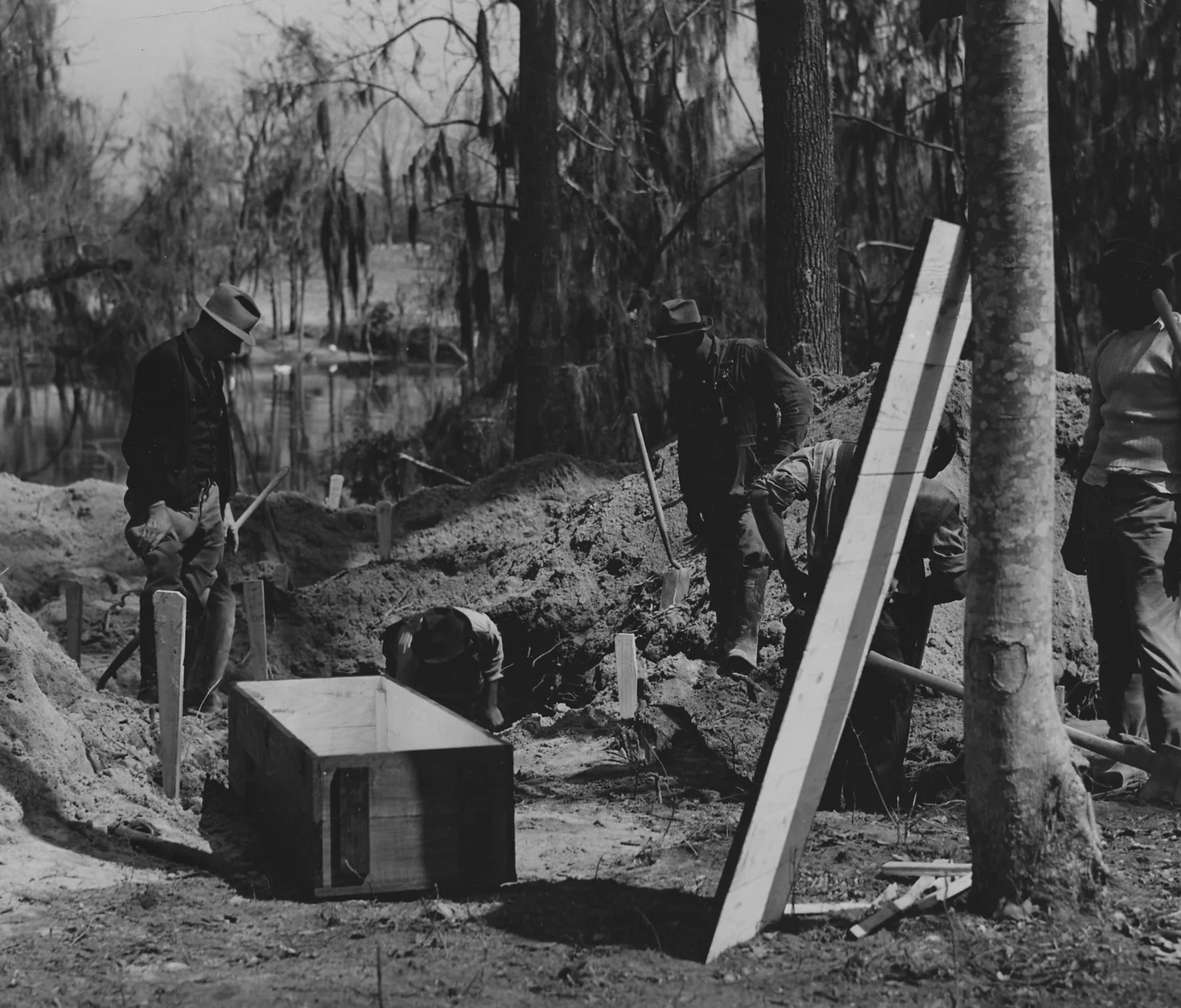Photo by Smith Collection/Gado/Getty Images
Across South Carolina in the late 1930s and early 1940s, federally funded projects that purported to modernize rural areas took a tremendous toll on Black communities, some of which traced back to the 17th century.
In 1934, the South Carolina Public Service Authority was established by act of its state legislature. The law empowered the Authority to build canals, dams, and power plants, to divert the waters of the Santee, to set rates for electricity it produced, to borrow money, and to issue bonds.
In 1938, the Authority began work on the Santee-Cooper Hydroelectric and Navigation Project in Berkeley County and parts of Orangeburg County. Once a prosperous plantation region, the area still had felt the impact of the Great Depression, and its residents suffered from intense poverty. State and federal officials saw the Santee-Cooper Project as a solution to the area’s many problems.
The project had three main goals: to extend electricity to rural communities, to trigger economic growth, and to improve the public health of the area. As a part of larger New Deal initiatives, the Santee-Cooper Project received funding from the Public Works Administration Project. Known as “South Carolina’s TVA,” the Santee-Cooper Project gave hope that the South, the region that President Franklin D. Roosevelt called the “nation’s number one economic problem,” could be redeveloped.
But to complete the project, nearly 9,000 graves had to be removed or were flooded. Most of them housed enslaved Africans and their descendants as well as various Indigenous peoples. Between 1938 and 1940, the Authority hired investigators to determine the condition and fate of each cemetery. In this photograph, we see grave diggers, many of whom were Black, hired by the Authority to help relocate the graves of those set to be reinterred.
While Charles Taylor, the director of the Cemetery Division of the Authority, called dealing with the remains a “sacred task,” there were many differences in how white, Black, and Indigenous burial grounds were treated. The Cemetery Division determined that at least 3,000 Black graves would be left “undisturbed” and thus flooded under the two reservoirs, Lake Moultrie and Lake Marion, created by damming the Santee and Cooper rivers.
Another 5,000 graves of enslaved Africans and their descendants would be removed at the request of white landowners. Workers like those pictured here dug out the remains and placed them in new coffins to be relocated to another tract of land owned by the original landowner or the South Carolina Public Service Authority. Although the majority of the landowners were white, fewer than five percent of the graves disturbed belonged to white people.
Many of the cemeteries found in the Santee-Cooper Basin existed among the swamps and forests that covered Berkeley County, and it was common for Black South Carolinians to use this environment to bury their dead. What the Authority saw, however, were burial grounds that appeared neglected. They did not look like “proper” cemeteries, which, in their view, should resemble a park or garden with manicured rows of headstones.
However, these cemeteries were not abandoned. Community members still interred bodies in them. In addition, many residents had intimate knowledge of persons buried in cemeteries even when headstones were not present.
The disruption of graves violated longstanding mortuary beliefs held by Black South Carolinians in the Santee-Cooper Basin. Many descendants of enslaved Africans in South Carolina carried traditions from the Kongo. Graves acted as a meeting place between the living and the dead. Many Black South Carolinians believed that cemeteries needed to exist in forests and swamps to hinder access by those who were not related to the deceased.
At the heart of progress or modernity was the disregard of the Black dead and living. What we do not see in the photograph is how the removal of the dead impacted the lives of residents in the communities they belonged to.

Learn more:
Edgar, Walter. History of Santee Cooper, 1934-1984. Columbia: R.L. Bryan Company, 1984.
Schulman, Bruce. From Cotton Belt to Sunbelt: Federal Policy, Economic Development & The Transformation of the South, 1938-1980. Durham: Duke University Press, 1994.
Thompson, Robert Farris. Flash of the Spirit: African & Afro-American Art & Philosophy. New York: Vintage Books, 1984.
Brown, Ras Michael. African-Atlantic Cultures and the South Carolina Lowcountry. New York: Cambridge University Press, 2012.





